|
BULB LOG 42 ---- 19th October 2005
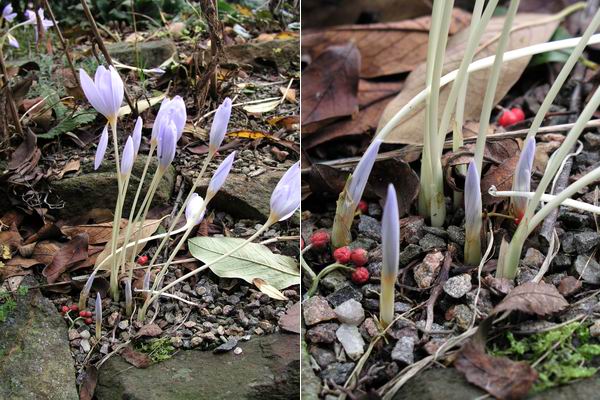
Crocus pulchellus second buds
Despite the poor weather and in particular the heavy rain and wind which plays havoc with the autumn flowering crocus we grow in the open garden, they continue to flower. As always nature is unlikely to cast all her eggs into one basket and Crocus pulchellus, like many others, has evolved a second series of buds that come up as, or just after, the first flowers are fading away, this way they extend their flower period and so stand a better chance of some decent conditions to get pollinated.
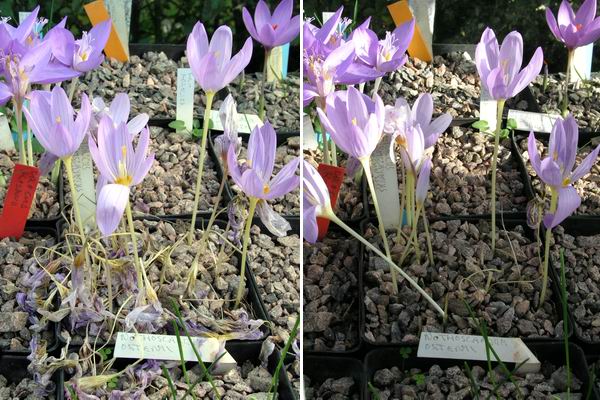
Remove spent flowers
We also have duplicates of all the crocus species from our garden in the bulb house so we can enjoy them what ever the weather. I remove all the flowers when they fade, like in the C. kotschyanus above, because by that stage if it has been successfully fertilised, the pollen should have reached the ovary and so the flower serves no further purpose. The main reason for removing these spent flowers is to prevent botrytis which can very quickly take hold and could, if not checked, get transferred down to the corms. Use a sharp tug upwards while placing the fingers of your other hand on the gravel just to ensure that you do not tug up the corm or damage the roots.
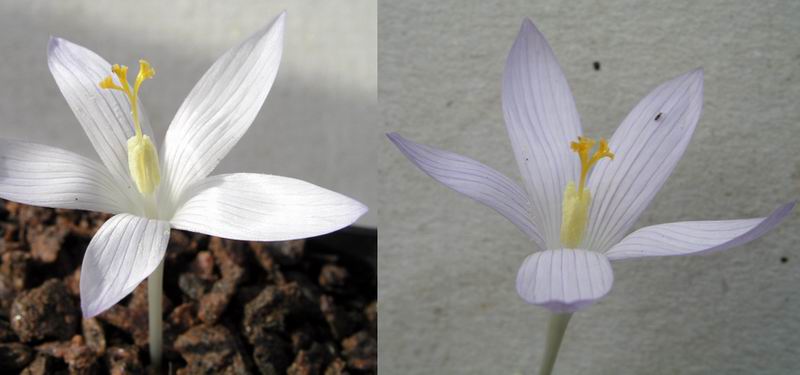
Crocus gilanicus
A rare and smaller relative of C. kotschyanus is Crocus gilanicus, it was only discovered in 1973 and named after Gilan province in Iran where it was found.
These pictures were taken three days apart with the left hand being the taken first and it shows how the colour intensifies slightly. This is the first flower from a pot of seedlings sown in March 2001, much later than I like to sow bulb seed but that was when I received it and unlike fritillaria seed I sow crocus seed whenever I receive it (more on seed sowing next week).
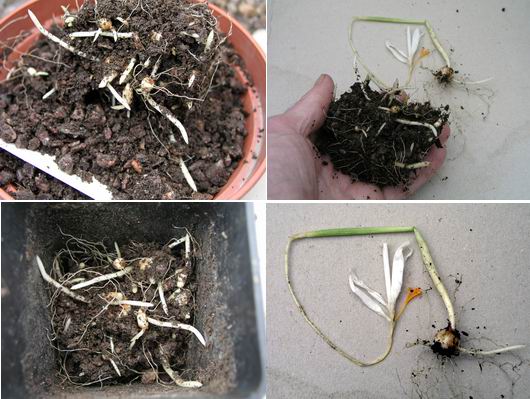
Removing growing corm
A few logs back I showed a white seedling of Crocus nudiflorus that I needed to remove to select out from the other seedlings. Now the flower is starting to go back I have carefully tipped out the pot and removed the white flowing corm which I will now grow on separately. There is no way of knowing what colour the other seedlings will turn out. I will have to wait until they flower, hopefully next year, but as C. nudiflorus corms make stolons, even before they reach flowering size, there will be some more of that white form to extract from this potful in future years.
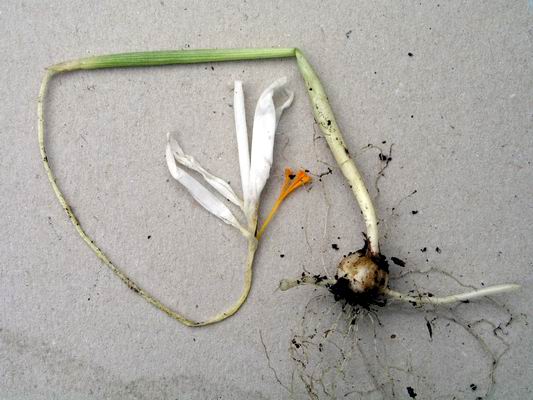
Crocus nudiflorus albus
This is also an interesting opportunity to study the growth of a crocus flower and corm. The roots emerge from the lower part of the corm out of which grows two stolons ,at the end of these, new cormlets will form. All the growth from the top of the corm is the flower; a very short stem is topped by the ovary; you can see the swelling that represents the ovary just below the bend in the tube, this stays under ground and it is just the upper part of the floral tube and the petals that appear above the surface.
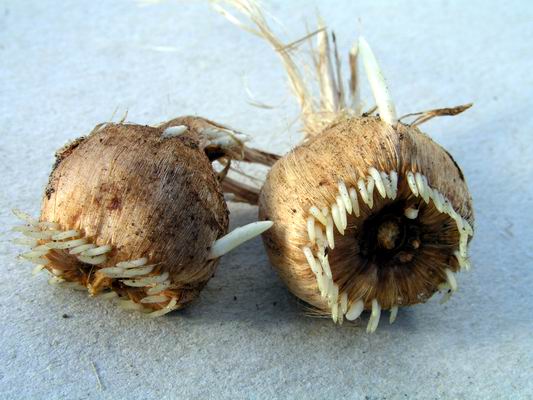
Crocus sativus corms with roots
These Crocus sativus corms show clearly that a crocus corm is just a compressed stem with the roots emerging from the bottom and the flower from the top. Secondary growths can emerge from around the compressed stem, just like the branches from the trunk of a tree, these can be either more flowers, non flowering shoots that will produce leaves like above or stolons as in the nudiflorus in the previous picture. The more we know about the growth cycles and the form of the bulbs we grow, the better chance we have of understanding how best to grow them.
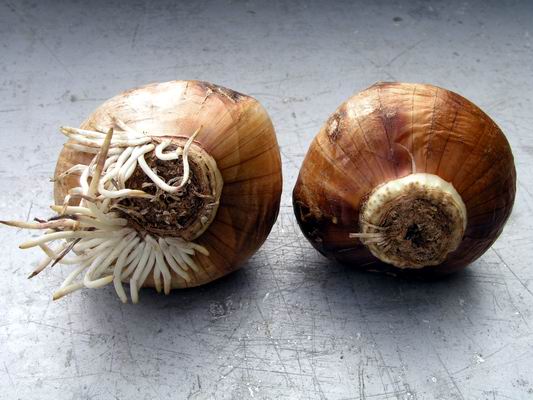
Narcissus bulbs with roots
These Narcissus papyraceus bulbs illustrate well the two early stages of root growth. The right hand bulb shows the emerging roots, searching for moisture, as an expanding white ring just at the bottom of the brown tunic scales. The left hand bulb is even better as on one side we see the swollen root ring while on the other side which has had contact with some moisture the roots are in the rapid root growth phase.
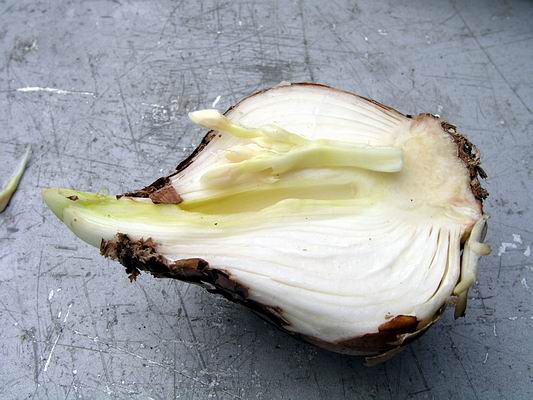
Dissected narcissus bulb
I cannot resist dissecting a few bulbs to study what is happening inside; yes, I was the kid that had to take everything apart to see how it worked. The flower is already formed, nestling inside the modified leaves that store a supply of food and moisture.
Narcissus bulb dissected
A closer look reveals the secrets of what makes up a true bulb. At the bottom of the bulb is the basal plate, from which the roots emerge and the darker shape above the plate is the much compressed stem; the scales that attach to this stem are leaves that have been modified to stay under ground and store food. In the centre is the flowering stem and the few leaves that will appear above the ground next spring. The slightly larger gaps between the scales, especially to the bottom right of the bulb, are where second growths will emerge from between the leaves, eventually forming another bulb - this is just like other plants that produce shoots from the leaf nodes on their stems.
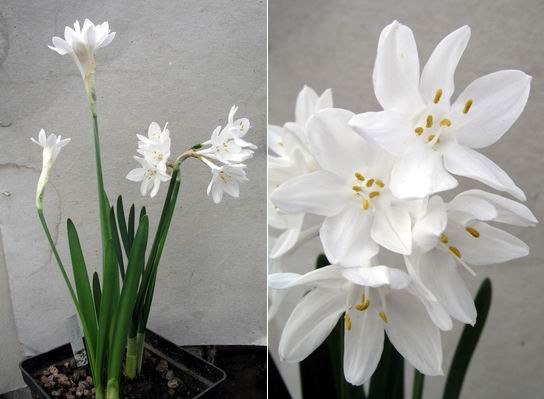
Narcissus broussonetii x2
I showed a picture of our Narcissus broussonetii the other week but now it is in full flower and it just fills the bulb house with its scent. Like all the autumn flowering bulbs this is not, as is sometimes said, a late flowering plant but they are early flowering, way ahead of most of their relatives which wait for the spring before coming into bloom.
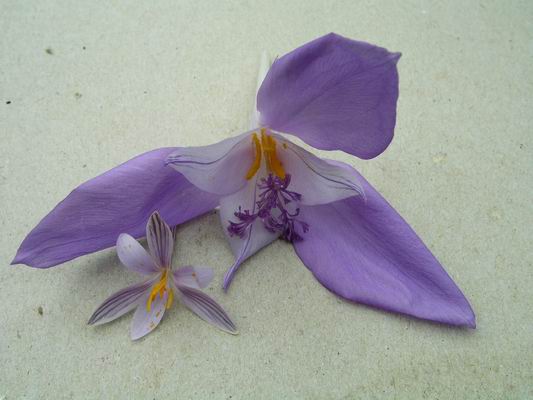
Crocus cambessedessii and banaticus
I wanted to relate the size range of the crocus we have in flower just now and here we have the wee beauty Crocus cambessedessii to the left and surrounded by a giant form of C. banaticus which is fully 10cms across without stretching out its petals. Another interesting fact about crocus flowers is the length of time they stay reasonably fresh after being picked. These two flowers have been lying by our computer for three days now without any water and they are only now showing signs of wilting, other flowers would wilt in hours with this barbaric treatment.
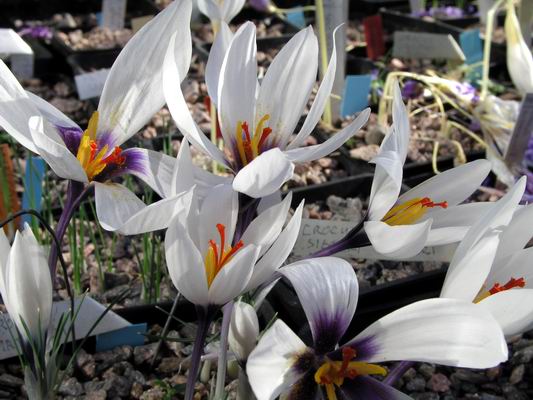
Crocus mathewii 1
And some self indulgence to end this week's log as I show two pictures of possibly my favourite autumn flowering crocus species, Crocus mathewii, much shown and discussed in the recent crocus pages of the forum.
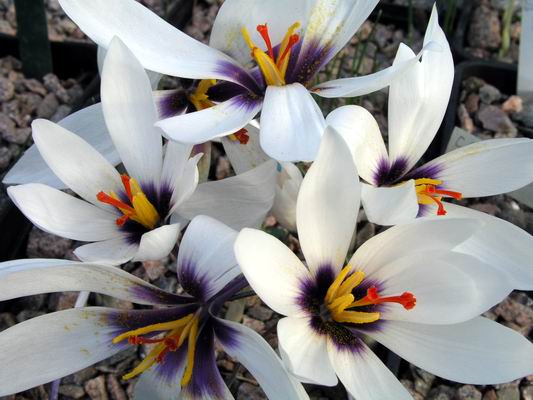
Crocus mathewii 2
It has that colour combination of white petals, a blackcurrant throat and wonderfully contrasting red style branches that is irresistible no matter what flower it appears in. I can immediately think of forms of Paeonia, Erythronium, Nomocharis and Hepatica that share these colours and are equally covetable.
^ back to the top ^
|

